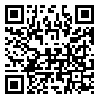BibTeX | RIS | EndNote | Medlars | ProCite | Reference Manager | RefWorks
Send citation to:
URL: http://mjiri.iums.ac.ir/article-1-2719-en.html

 , Malahat Akbarfahimi
, Malahat Akbarfahimi 
 , Afsoon Hassani Mehraban
, Afsoon Hassani Mehraban 
 , Shohreh Jalaei
, Shohreh Jalaei 
 , Mohammad Torabi-nami
, Mohammad Torabi-nami 

Background: Visualattention is known as acritical base for learning.Thepurpose of the present study was to design, develop and evaluate the test-retest and internal consistency reliability as well as face, content and convergent validity of thecomputer- based selective visual attention test (SeVAT) for healthy first-grade school children.
Methods :In thefirst phase of this study,the computer-based SeVATwas developedin two versionsof original and parallel.Ten experts in occupational therapy helpedto measure the content validity using the CVR and CVI methods.Face validity was measured through opinions collected from 10 first-grade children. The convergent validity of the test was examined using the Spearman correlation between the SeVAT and Stroop test. In addition, test-retest reliability was determined by measuring the intra-class correlation (ICC) between the original and parallel versions of theSeVAT in a single session. The internal consistency was calculated by Cronbach's alpha coefficients. Sixty first grade children (30 girls/30boys) participated in this study.
Results : The developed test was found to have good content and face validity. The SeVAT showed an excellent test-retest reliability (ICC= 0.778, p<0.001) and internal consistency (Cronbach's Alpha of original and parallel tests were 0.857 and 0.831, respectively). SeVAT and Stroop test demonstrated a positive correlation upon the convergent validity testing.
Conclusion : Our results suggested an acceptable reliability and validity for the computer-based SeVAT in the assessment of selective attention in children. Further research may warrant the differential validity of such a test in other age groups and neuro-cognitively disordered populations.
| Rights and permissions | |
 |
This work is licensed under a Creative Commons Attribution-NonCommercial 4.0 International License. |



